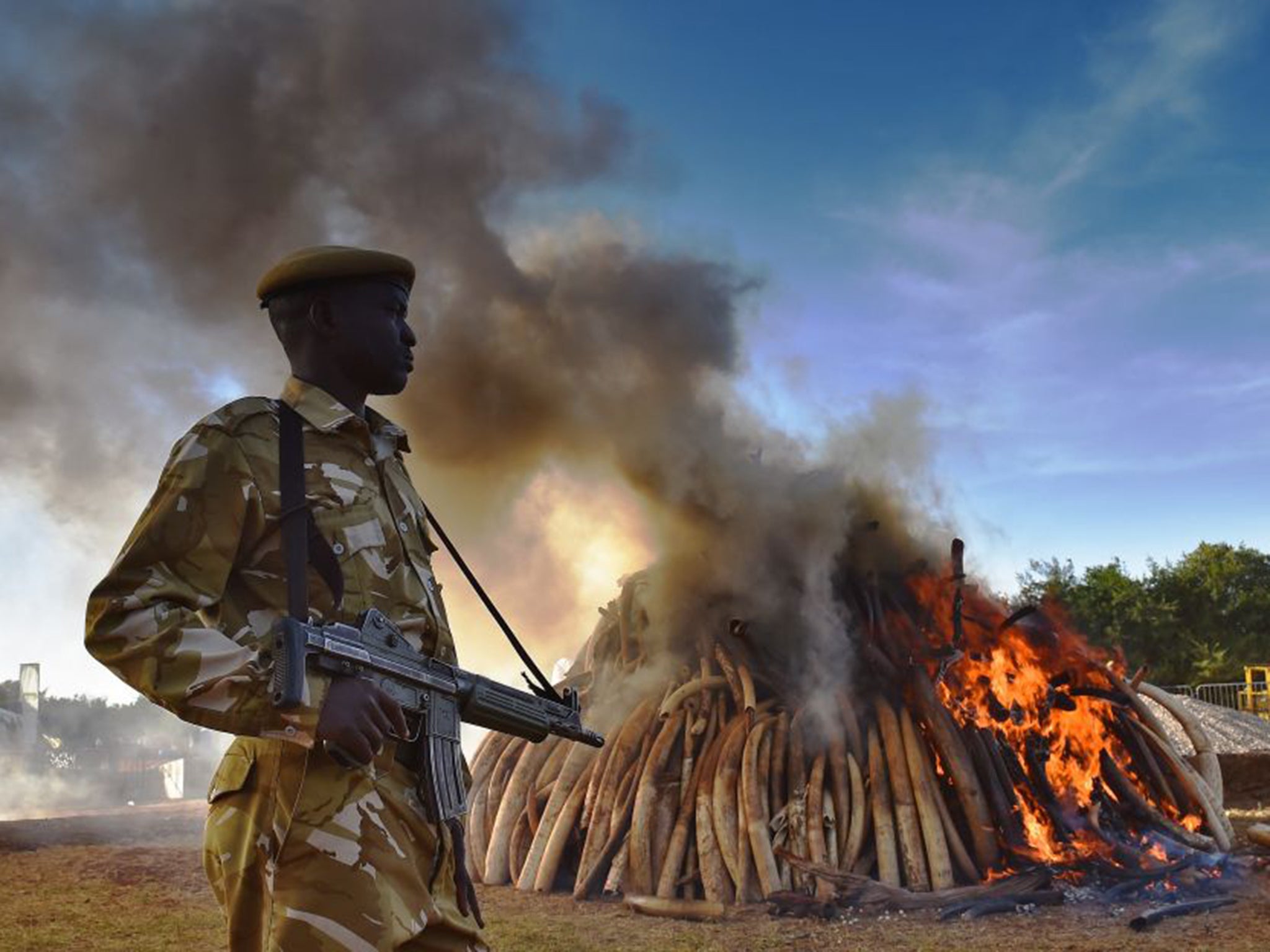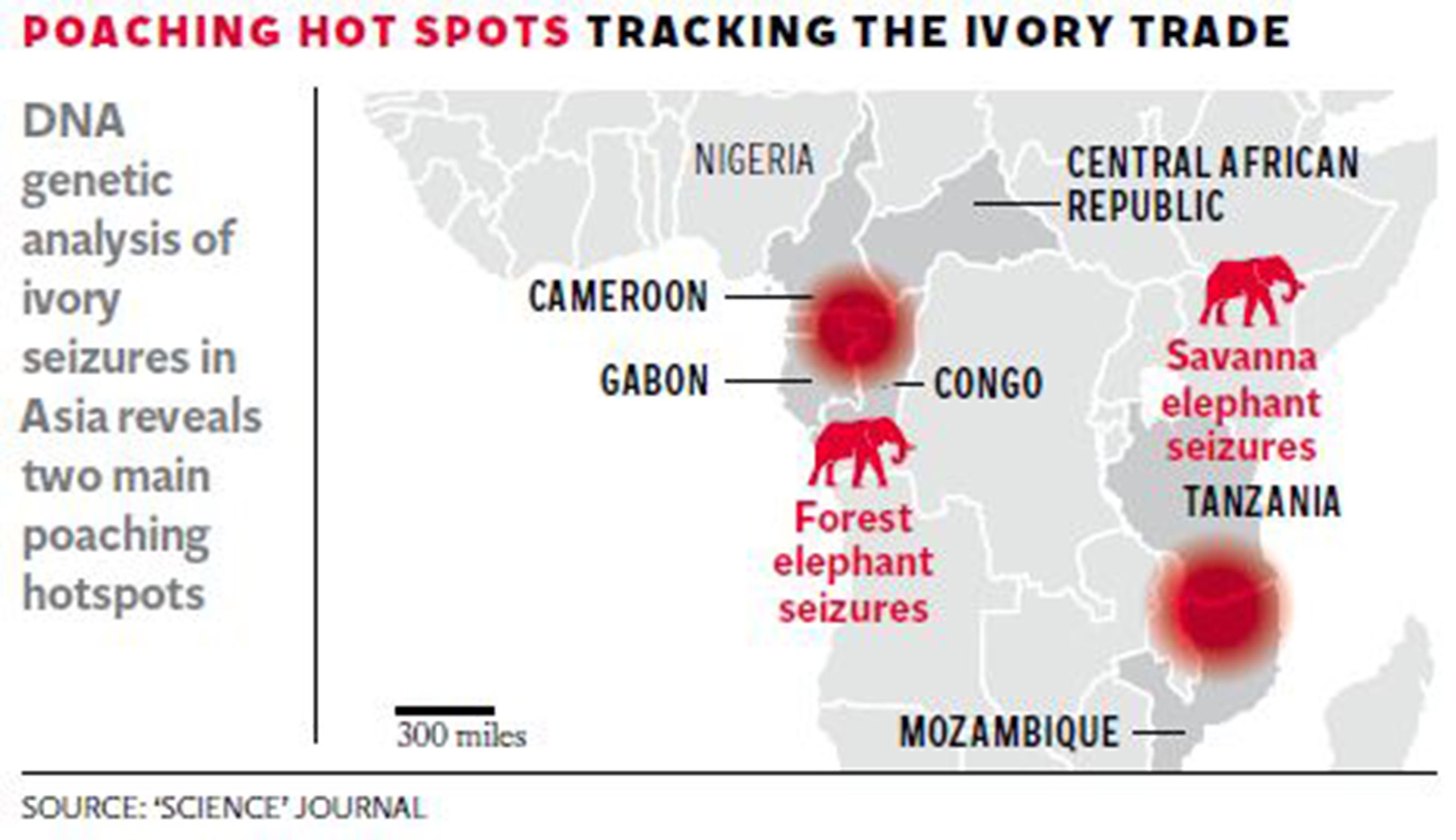Two geographical 'hotspots' in Africa account for 85 per cent of illegal elephant poaching, DNA study finds
The identification of the geographical origins of the ivory trade could help to channel anti-poaching resources more effectively

Your support helps us to tell the story
From reproductive rights to climate change to Big Tech, The Independent is on the ground when the story is developing. Whether it's investigating the financials of Elon Musk's pro-Trump PAC or producing our latest documentary, 'The A Word', which shines a light on the American women fighting for reproductive rights, we know how important it is to parse out the facts from the messaging.
At such a critical moment in US history, we need reporters on the ground. Your donation allows us to keep sending journalists to speak to both sides of the story.
The Independent is trusted by Americans across the entire political spectrum. And unlike many other quality news outlets, we choose not to lock Americans out of our reporting and analysis with paywalls. We believe quality journalism should be available to everyone, paid for by those who can afford it.
Your support makes all the difference.There are two geographical “hotspots” in Africa were illegal elephant poaching accounts for most of the ivory smuggled overseas, a major DNA study of seized shipments has found.
A genetic analysis of the ivory in 51 different ivory shipments confiscated across Africa and Asia has revealed that since 2007 about 85 per cent of the continent’s elephant poaching was concentrated in two areas on opposite sides of the continent.
Scientists found that the tusks of forest elephants were most likely to come from a region in west Africa covering Gabon, the republic of Congo and the Central African Republic, whereas those from savannah elephants came from an area focussed on the border area between Tanzania and Mozambique.
The identification of the geographical origins of the ivory trade could help to channel anti-poaching resources more effectively against an illegal activity that funds organised international crime and terrorism as well as jeopardising the survival of an iconic species, the researchers said.
It is estimated that in 2011 alone, some 40,000 elephants were slaughtered for their valuable ivory. By 2013, the number could have risen to 50,000 given that 51 tons of ivory was seized in transit that year compared to 41 tons in 2011, the scientists said.
“When you’re losing a tenth of the population a year, you have to do something more urgent – nail down where the major killing is happening and stop it at the source,” said Samuel Wasser, a biologist at Washington University in Seattle, who led the study published in the journal Science.
“Hopefully or results will force the primary-source countries to accept more responsibility for their part in this illegal trade, encourage the international community to work closely with these countries to contain the poaching [and] choke the criminal networks that enable this transnational organised crime to operate,” Dr Wasser said.
The pioneering study involved building a geographical map of the natural variation in elephant DNA by analysing samples of dung, tissue and hair collected from 1,350 elephants living across Africa. This enabled the scientists to locate the origin of a seized ivory tusk to location with an accuracy of between 300km and 500km.
They analysed shipments going back to 1996 and found that, up to 2007, all but one of the shipments came from four areas, and that after 2007 they became concentrated on just two – one in west Africa where the forest elephant lives and other in east Africa involving the larger, savannah species.
The study revealed that the savannah elephant hotspot, centred on the Selous Game Reserve in southeastern Tanzania and the Niassa Reserve in adjacent northern Mozambique, began to shift northward in 2011 towards Kenya.
The researchers also found that most of the seized ivory was shipped, or about to be shipped, from a different country to its origins, suggesting that the trafficking gangs were attempting to cover the tracks of an illegal trade that has become the fourth largest international crime.
“There are abundant indications that ivory is being used to fund terrorist groups as well as organised crime,” said William Clark of the environmental security directorate of Interpol, and a member of the research team.
Much of the ivory was seized in Asian countries, such as the Philippines, Singapore and Hong Kong where there is a lucrative, illicit market in ivory products.

Dr Wasser said that knowing the geographical origins of the ivory trade will help to concentrate limited resources on the countries where it matters most in order to disrupt the market at its source.
“Africa is a huge continent and poaching is occurring everywhere. When you look at it that way it seems like a daunting task to tackle this problem. But when you look at large ivory seizures, which represent 70 per cent of illegal ivory by weight, you get a different picture,” he said.
“Understanding that vast amounts of this major transnational trade is focussed on two primary areas makes it possible to focus law enforcement on those areas and eliminate the largest amount of illegal killing,” he explained.
Subscribe to Independent Premium to bookmark this article
Want to bookmark your favourite articles and stories to read or reference later? Start your Independent Premium subscription today.
Join our commenting forum
Join thought-provoking conversations, follow other Independent readers and see their replies
Comments